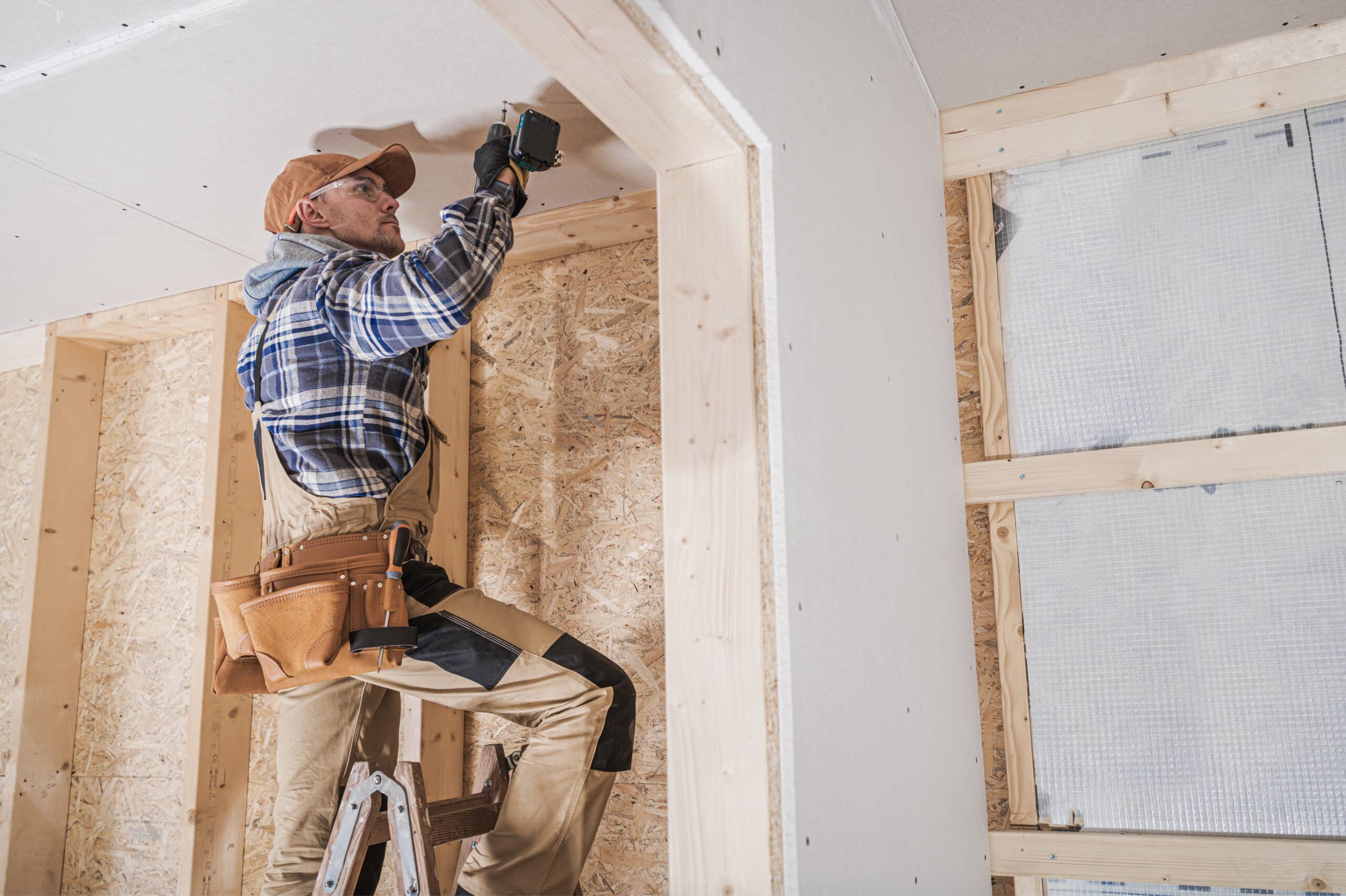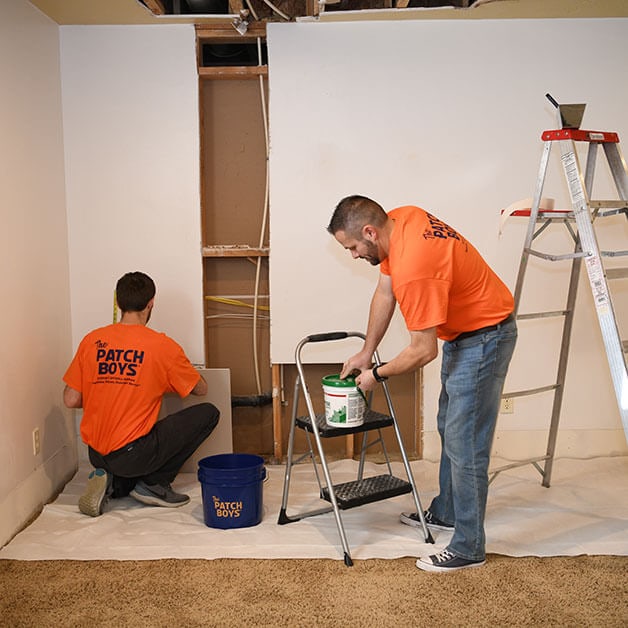Specialist Sheetrock Repair Fort Worth for Quick Fixes
Specialist Sheetrock Repair Fort Worth for Quick Fixes
Blog Article
Drywall Setup Made Easy: Tips for Perfect Outcomes
Drywall installment is commonly viewed as a daunting job, yet with the right strategy and expertise, it can become a convenient endeavor. Selecting high quality materials and preparing the setup area are critical first steps that establish the foundation for success. In addition, mastering strategies for reducing, hanging, and ending up drywall can dramatically impact the outcome. As we check out these vital suggestions, you may locate that even the tiniest modifications in your approach can bring about incredibly improved outcomes, leaving you to think about exactly how these techniques can change your next project.
Picking the Right Materials
Picking the suitable products for drywall installation is vital to achieving a long lasting and aesthetically pleasing finish. drywall installation. The key element, drywall sheets, commonly come in numerous densities, with 1/2-inch sheets being standard for indoor walls. For locations requiring additional dampness resistance, such as shower rooms or kitchen areas, think about utilizing green board or cement board, which are particularly designed to endure moisture

In addition, picking the right bolts-- either nails or screws-- is essential for protecting the drywall to the framework. Drywall screws are usually preferred for their holding power and lowered danger of standing out. Finally, think about the finishing touches such as guide and paint, which not just boost the look however likewise safeguard the drywall from wetness and wear.
Preparing the Installment Location
Before starting the drywall setup process, it is vital to prepare the installation area extensively. This prep work includes numerous essential actions to make sure a smooth and successful task. Clear the location of any kind of furniture, home appliances, or obstructions that can prevent gain access to. A tidy workspace minimizes the threat of damages to existing products and permits reliable movement throughout setup.
Following, examine the wall surfaces and ceiling for any blemishes, such as cracks, openings, or mold and mildew. Address these problems beforehand; spot any problems and allow adequate time for fixings to dry. Furthermore, make sure that electric outlets, switches, and plumbing are appropriately placed and accounted for, as this will certainly influence drywall positioning.
Take into consideration the environmental conditions as well. A secure temperature level and humidity level are vital for optimal bond and performance of the drywall materials. Make use of a dehumidifier or heating system to develop suitable problems. if necessary.
Trimming and Hanging Drywall
The trick to reliable drywall installment hinges on the exact cutting and hanging of the panels. Begin by gauging the room properly, thinking about any type of blockages such as electric outlets or windows. Use a straight edge and an utility blade to rack up the drywall along your measurements, then break it along the racked up line for a tidy break. For more elaborate cuts, such as around outlets, a drywall saw can be made use of for accuracy.

Constantly work from the top down and left to right, making sure that you maintain a staggered pattern to improve stability. Correctly hanging the drywall sets the structure for a smooth surface, ultimately bring about exceptional outcomes in your drywall project.
Insulation and Mudding Techniques
While appropriate cutting and dangling of drywall sets the phase, the following vital step includes understanding additional resources taping and mudding techniques to ensure a seamless finish. Insulation is important for strengthening joints and preventing fractures; it includes installing tape into the applied joint compound (mud) Beginning with a quality fiberglass or paper tape, applying the tape over the joint and pushing it right into the damp mud using a taping knife, making sure no air bubbles remain.
Once the tape is in area, use a thin layer of joint compound over the tape, feathering the edges to produce a smooth shift to the drywall surface area. Permit this layer to dry totally before sanding it gently to get rid of blemishes. Repeat this procedure, using additional coats of mud as necessary-- normally a couple of layers-- while progressively expanding the application area check that with each layer to achieve a seamless look.
After the last layer dries out, sand the surface area with a fine-grit sandpaper until smooth. drywall repair. Keep in mind to wear a mask throughout fining sand to stay clear of breathing in dirt bits. Understanding these taping and mudding strategies is essential for attaining a professional-quality coating in your drywall informative post installment
Ending Up Touches for Excellence
Achieving a flawless drywall setup surpasses mudding and taping; it culminates in the finishing touches that boost the overall look. These last steps are vital in making sure a professional-grade surface that improves the aesthetic appeals of your area.
Begin by sanding the dried joint substance to produce a smooth surface. Use a fine-grit sandpaper and a fining sand block or pole sander for optimal control. Pay certain interest to edges and edges, as these locations often tend to need more thorough work. After sanding, clean down the walls with a moist fabric to remove any kind of dust fragments, making certain a clean surface for paint.
Following, apply a guide specifically developed for drywall. This action is necessary, as it helps seal the joint substance and offers a consistent base for the topcoat. When the guide dries out, examine for any kind of blemishes, and retouch as required.
Conclusion
In verdict, successful drywall installation hinges on the cautious choice of products, detailed prep work of the installment area, and precise execution of reducing and hanging techniques. Mastery of taping and mudding processes is vital for accomplishing a smooth finish.
Drywall installment is often viewed as an overwhelming job, yet with the ideal strategy and knowledge, it can end up being a convenient undertaking.Choosing the suitable products for drywall installment is crucial to achieving a durable and aesthetically pleasing finish.Prior to beginning the drywall setup process, it is vital to prepare the setup area thoroughly. Understanding these taping and mudding strategies is essential for accomplishing a professional-quality coating in your drywall installment.
In final thought, successful drywall installment pivots on the cautious selection of products, detailed prep work of the setup area, and specific implementation of cutting and hanging techniques.
Report this page